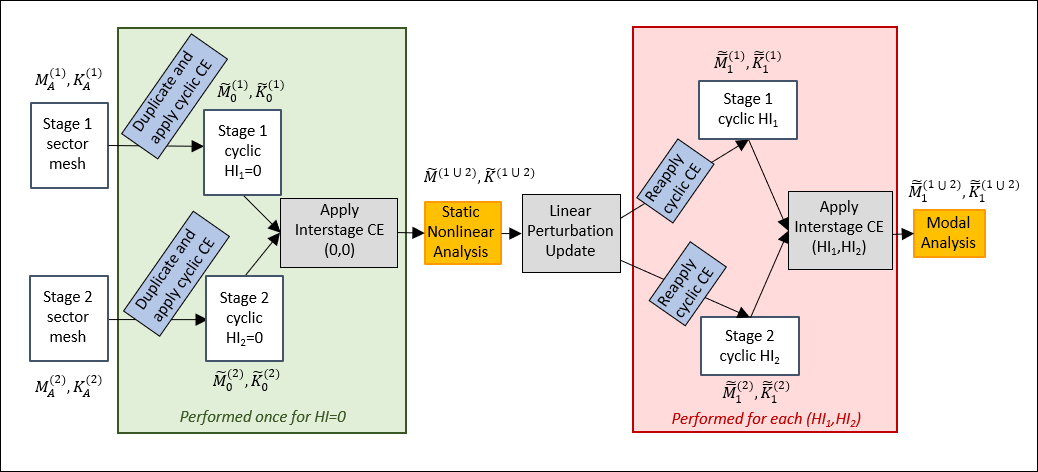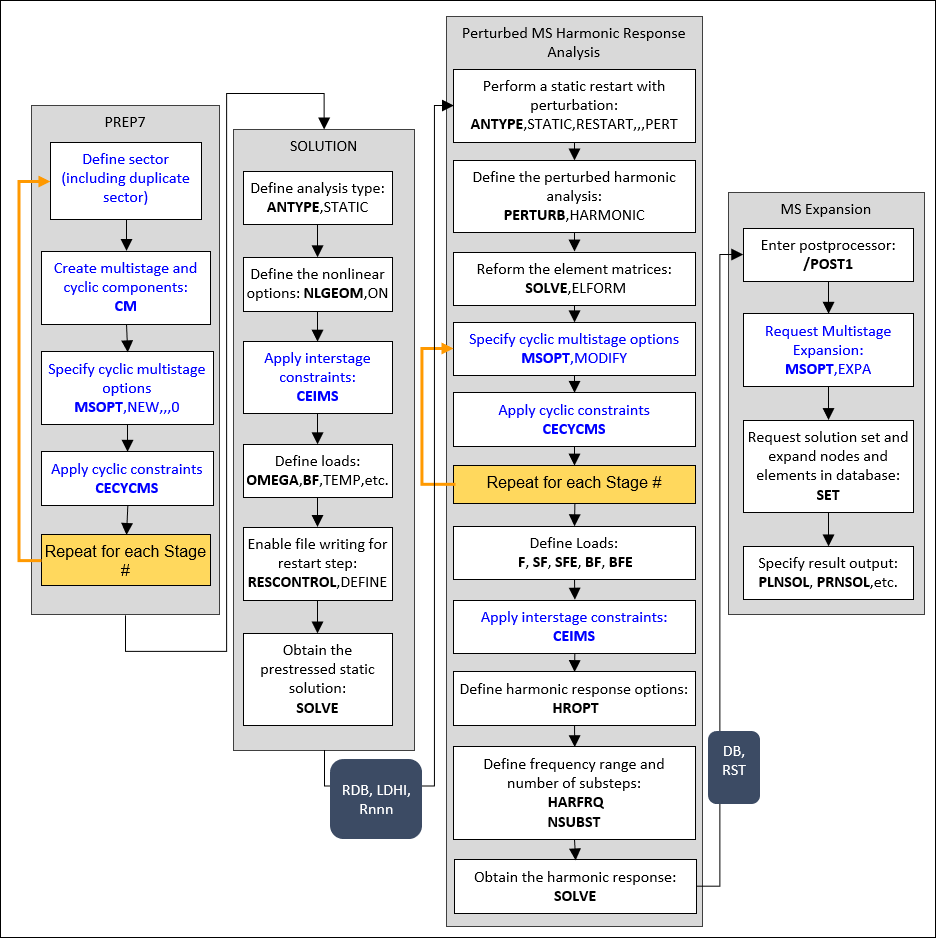The representative flow diagrams presented here provide an overview of the multistage analysis procedure. Figure 5.1: Workflow for Multistage Modal Analysis of a Model with two Cyclic Stages shows two cyclic stages being coupled in a linear perturbation modal analysis. The stages are first combined for a static solve using harmonic index = 0 (HI = 0) constraints for both the cyclic and interstage boundaries. The system is updated, and then new constraints are applied for both cyclic and interstage boundaries to represent the modal harmonic index of interest.
Note: The Linear Perturbation (LP) process flow diagrams provide a representation of the analyses. Non-LP analyses are also supported. The non-LP process will be almost identical to the LP process flows with the removal of the static base step, perturb, and matrix reforming steps. The only difference is that if there is no follow up analysis after the static analysis and only HI = 0 stages are defined, then the duplicate sector is not required. This may provide significant computational savings.
The following process flow diagrams provide a high-level representation of the commands and processors used in various multistage linear perturbation analyses. All of these analysis types are also supported without preloading by removing the static prestress base analysis:
| Multistage linear perturbation modal analysis |
| Multistage linear perturbation full harmonic response analysis |
| Multistage linear perturbation mode-superposition (MSUP) harmonic response analysis |
Blue text in these diagrams indicates steps that are specific to a multistage analysis.
Several example problems demonstrating the use of multistage analysis are provided in Examples.






